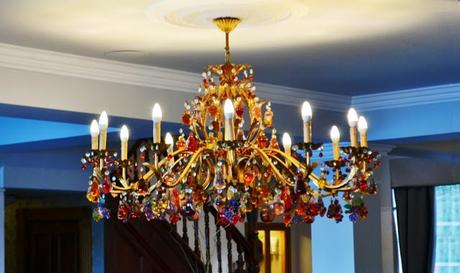It seems an entirely logical explanation, with the commonly accepted inference that such behavior (if continued for any length of time) is not the cornerstone of a healthy life-style. However, I've been doing a bit of research and it appears there are those who would argue the merits of a more literal origin for the phrase...

Really? I don't think so!
... but it begs the question: why would you? If you want double the light, just use two (or more) candles; or if you only have the one, cut it in half why don't you?Lighting a candle at both ends requires either: holding it in the middle with one hand - which surely defeats most purposes I can imagine, or necessitates balancing it precariously in horizontal mode on some object - in such a way that it won't just roll off and go out or worse, start a fire.
In each of these literal 'burning the candle at both ends' scenarios, the mere fact that it is horizontal means that it burns down much faster - as the wax falls directly away exposing more wick more quickly, rather than forming a retarding pool round said wick. Result? Double the light for a shorter time and one hell of a waxy mess, if not burned fingers into the bargain. Really? I don't think so!
However, if it's neither about extremely long working hours nor a phrase to be taken literally (just too silly), then 'burning the candle at both ends' has to be a metaphor for excessive behaviour, with its connotations of unsustainable, thrill-seeking recklessness, intense but ultimately destructive pleasure or whatever other all-consuming activity one cares to imagine (and I'm just illustrating here, not passing a value judgement).
There you have three options, (a), (b) and (c) respectively. I've had to resort to the figurative (a) on many (short-lived) occasions in student and working life when completing assignments and projects to immovable deadlines. I've indulged briefly in the metaphorical (c) at different times down the decades but I'm not going to elaborate here (so use your imaginations). I have never been remotely tempted by the literal (b) option. How about you? If it were an exam paper, this is where it would say: Discuss. (You may choose to do so by appending a comment to the blog, anonymous or otherwise, if you wish.)
The unbeliever and I recently enjoyed a few days and nights away at Beech Hill House on the shore of beautiful Lake Windermere, in celebration of both of our birthdays. (It's too soon to swap life in the fast lane for life in the bus lane!) I mention this only because Beech Hill House possesses one of the finest Venetian chandeliers I have ever seen. My photograph below doesn't do it justice.

Exquisite beauty...
Of course the twelve (apostolic) candles are electric nowadays but that modern twist does little to detract from the magic - the sheer elegance of the gilt branched design festooned with all manner of coloured Murano glass fruits. It glitters and seduces like a suspended Aladdin's cave. For a lover of glass, the Beech Hill House chandelier is simply stunning to look at in sunlight or candlelight...and one day might merit a poem, but today is not that day.The birthday break is over, I'm older but none the wiser and blogging duties recommence. I hope you've enjoyed these fresh ramblings about candles. The topic has cropped up a few times over the years, so it's quite a challenge to discover a fresh angle.
I'll finish up by offering you in advance of St. Valentine's Day this little poem on the nature of love (with the usual dash of Greek mythology stirred in), as it's also relevant to the week's theme.
Of Aphrodite & Hephaistos
She, the combustible essence
Of sulphurous love;
He, the renowned artificer,
Bearing up steadfast and dutiful.
We owe to the married Gods
This union of pale wax column
And burnished copper cup,
Forged with great passion
And lit by a match made in heaven
To brighten dark, earthly hearts.
The votive tallow in its holder
Flickers to a flame,
Allows our shallow lives
To sparkle and flare,
Rendered briefly bolder,
Amorous, even beautiful.
Thus it enriches
Even as it disappears,
(For passion cannot last)
In ribbons of smoke
And molten tears.
Thanks for reading. Stay happy, Steve ;-) Email ThisBlogThis!Share to TwitterShare to Facebook
Reactions:
